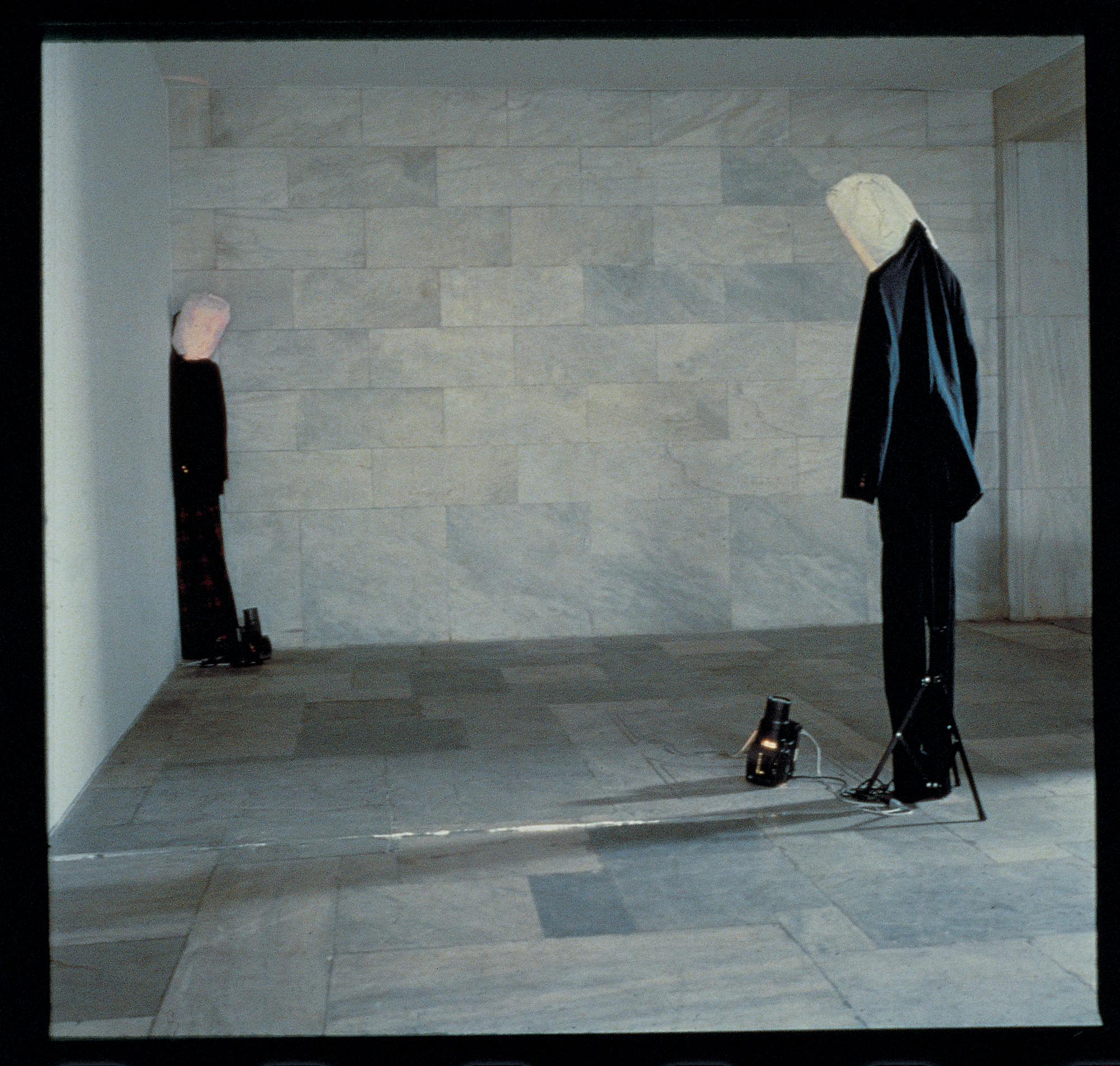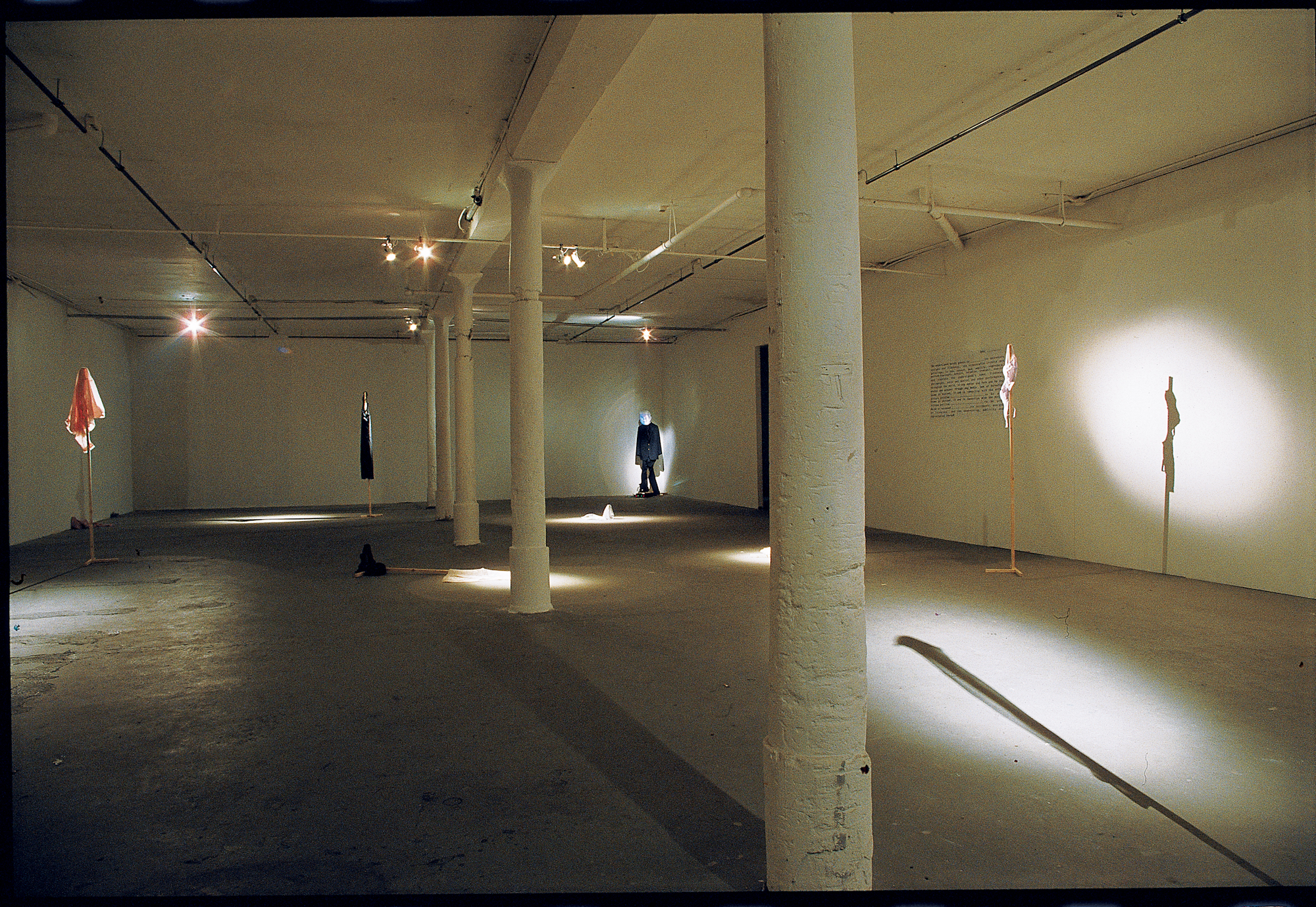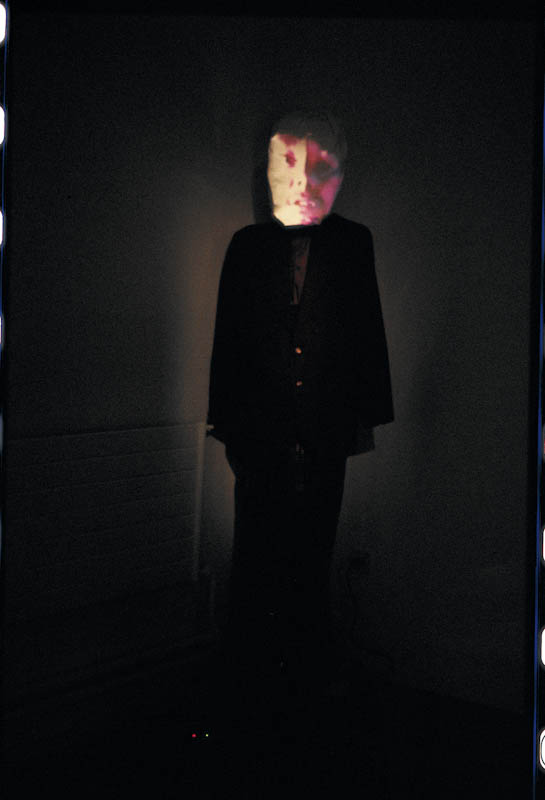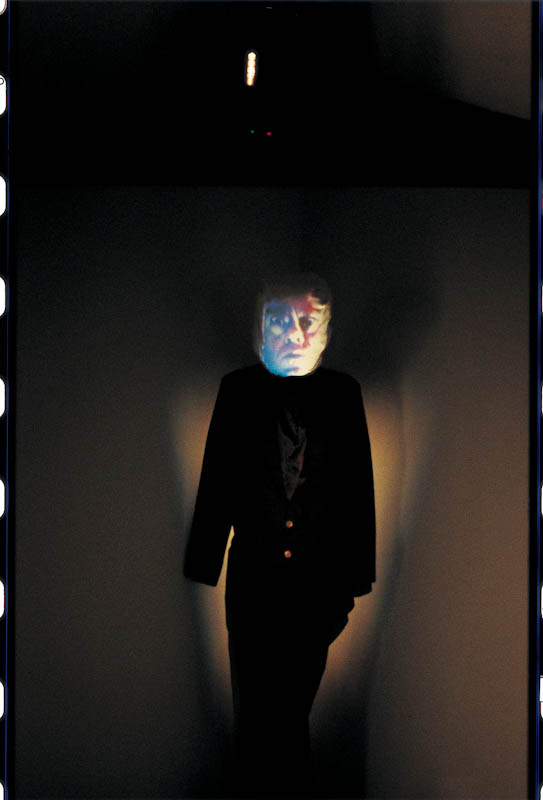Phobic / White Trash
JGM Galerie & Campoli Presti | 79, France
Apr. 26 - May. 11, 2013




Tony Oursler and Mike Kelley collaborated throughout the years, since they formed the legendary protopunk music/performance group the Poetics at California Institute of the Arts in 1976.
Importantly, Oursler invited Kelley to participate in his early 1990s dummy series, which resulted in Phobic/White Trash. Recorded in NY and LA in 1992, the starkly dramatic installation juxtaposes two opposing figures who interact as much as they interrupt one another, poised and intersecting the room diagonally, droning ever on.
A comment on the sprawling, chaotic, intoxicated and escapist landscape of suburban America, the two scripts take distinctly different approaches to this zone. Kelley strings together a series of tales, each resolving in a claustrophobic anxiety-drenched dilemma. His performance causes the viewer to empathize with the conditions of the Phobic through direct address:
Now there's a group of fellows and they like to dig. And the digger of the group likes to dig down as deep as you are tall. And you enjoy crawling into the hole. It feels good to be in this dark cool earth. But then the hole collapses and you're buried in the hole. And only your head is sticking out above ground. And the rest of you is held, compressed in by the earth. And you can't move. And all the fellows are laughing and pointing at your head sitting on top of the ground. And they won't dig you out. So you're stuck. And you're stuck and you're screaming and you're screaming "Dig me out of this hole!" But they won't. And finally they start to dig you out.
Oursler takes the point of view of a fusing domestic setting with media tableaus, putting the viewer in the position of a floating camera.
The camera sees a suburban sprawl. There's a helicopter shot . We slowly arc through the air and we can see swimming pools and rooftops and eucalyptus trees and cactus. Tennis courts and driveways, kids on bicycles. It's night, and the streetlights create halos at their bases. Shadows are cast, electricity is doled out from house to house creating patterns on the landscape, glowing there. The camera moves in closer and closer to one particular house at the end of a cul de sac. The camera floats down gently, gently, to the level of the second story of the house and begins to drift around facing the interior of the house, it rotates a number of times. We see some dark rooms and some rooms are lighted. There are characters there. We cannot hear anything, but can only hear mumbled sounds coming from the interior. The sound of a television, the radio, voices talking in a fragmented angry fashion. There we hear footsteps. Now a crashing. The voices raise higher. Screaming now. We can hear them now wailing. We hear a low thud followed by a moan. And then the crack of hand striking flesh. More footsteps, we see shadows cast across the darkened rooms as figures move past the doors. Cracks of light opening there, a silhouette. Someone has just entered the room. We are outside looking in. Cut.
From an interview in that year with Elizabeth Janus, Oursler states, "I was thinking a lot about how movie time? media time, the camera, the narratives? has really punctured our world, how it is the fourth-dimensional space of our time. I tried to make figures that could exist in between the interior and exterior worlds, literally, like seers that we can't see and can't see us. You can begin to see this in Phobic and White Trash. Oursler continued, "These works are a bridge between two subsets of dummy projects: the "movie" series and the series based on psychological states. These two subsets intersected in a sea of blood, so to speak; or, more simply put, in my ongoing interest in violence. I'm questioning the impulse to reenact extremely elaborate violent trauma? a violence that takes on ritual dimensions? and whether this is somehow a positive service that the media performs for the public or whether we are involved in some kind of sick cycle. Anyway, death and the fear of death seem to be great motivators."
On the occasion of Tony Oursler and Mike Kelley's collaboration, The Poetics, at the Centre Pompidou, Oursler and JGM decided to, in homage to Kelley, present Phobic/White Trash, which is on view through May 11, 2013.
Phobic/White Trash has been shown at Centre d'art contemporain Geneve (1993), Kunstwerke Berlin, and Andrea Rosen, New York.